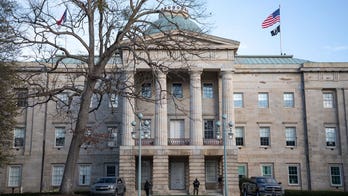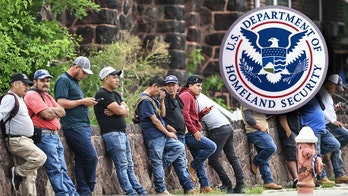
(AP Photo/Andre Penner)
Imagine for a moment that you have just been elected governor of your state and on your first day in office you learn that you must deal with a 3.3 billion dollar shortfall - representing 44 percent of revenues – your economy has plunged into negative growth, and banks have refused to make loans to your treasury because of your state’s appalling past fiscal record and extreme credit risk. Compounding the bad news, revenues into the treasury are collapsing, 54 percent of the children in your state live under the poverty level, and you are facing immediate bankruptcy.
Although it sounds like the current economic situation we hear about on the Mainland- this is the story about the island of Puerto Rico and its road to recovery under the leadership of its governor, Luis Fortuño.
After a decade long recession that bankrupted the island, Fortuño had two choices upon his election: keep the status quo and drive Puerto Rico over the fiscal cliff, or make some difficult decisions to save the island from catastrophic economic disaster. Even prior to his swearing in ceremony, Fortuño travelled to New York City to meet with rating agencies to deter them from slashing Puerto Rico’s sovereign credit rating to junk status.
Unlike U.S. President Barak Obama, who turned to the printing press with empty promises of ways that he would “stimulate” the moribund American economy, Governor Fortuño chose to implement difficult and true fiscal austerity measures to achieve fiscal stability. He then set out to reach across the aisle to:
• Reduce government by 20 percent.
• Slash political appointments by 30 percent.
• Suspend collective bargaining for two years.
As a result, equivalents of 17,000 government jobs were slashed, and by virtue, so was government spending. The opposition stood back to see the backlash that was sure to come. Unemployment rose to 17 percent from 15 percent, and consequently, Governor Fortuño’s favorability plummeted as well in proportionate measure.
- Daniel Garza: Choose to Live LIBRE
- Daniel Garza: GOP Candidates Tackle a World in Peril
- Daniel Garza: Freedom & Prosperity Should Be Our Heritage, Not Poverty
- Daniel Garza: High (and Low) Lights of the GOP Debate
- Daniel Garza: A Tax by Any Other Name…
- Best Pix of the Week
- Puerto Rico, Drug Corridor to the US
- Mexicana Flight Attendants Turned Calendar Girls Feud after Success
Undaunted and determined to get the island back on track, Governor Fortuño’s office also moved to put labor and regulatory reforms in place with the intent to improve the business climate in Puerto Rico. Additionally, corporate tax rates were cut from 40 percent to 30 percent, and he reduced the seven existing tax brackets to only three ranges - 20 percent, 25 percent, and 30 percent.
Skeptics scoffed and upped their predictions of continued economic downfall. But the collapse never came.
Instead, Puerto Rico’s economic situation soon experienced a halt in its downward tailspin. It stabilized, and shortly thereafter improved as government spending shrank, the burden of sustaining so much bureaucracy was ameliorated, and the island’s business climate became much friendlier to investors, homebuilders and service providers looking to expand.
Today, the unemployment rate in Puerto Rico is down to 14 percent, the deficit-to-revenue ratio went from being the highest in the nation to fifteenth, and debt has been reduced from $3.3 trillion to $610 million in just three years. Additionally, a five-year property tax holiday has helped the housing market recover. Sales of new homes were up over 90 percent in 2011, and existing home sales are currently up to 35 percent.
Surely, there is much progress yet to be made. Public-private partnerships need to be green-lighted, a sound energy blueprint that would reduce dependence on imported fuels remains stalled, an expansion of reforms to improve business competiveness is suffering under the paralysis of analysis, and the deficit must be brought down to zero.
These pending items will surely expend the last ounce of the Governor’s political capital. Even so, the people of Puerto Rico are beginning to see improvements in their lives and have recognized that an economic recovery of this scale is a process that requires realistic expectations of just how much can be improved in a short span of time. To change the course now would reverse the gains so many have worked for to improve life on the island.
It is important to understand that Puerto Rico’s economic fortunes are directly mutually dependent on the national economy. The contrast in the model of governance on the mainland and the island is palpable. The reforms made by a courageous and wise governor are working. He saw two roads diverged in a wood and took the one less traveled, and made all the difference.




